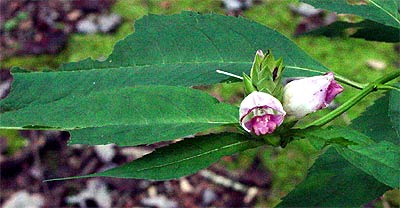 Turtlehead
Turtlehead
Chelone glabra
From King's American Dispensatory
Botanical Source.—This is a perennial, smooth, herbaceous plant, with a simple, erect, somewhat 4-sided stem, about 2 or 3 feet high. The leaves are opposite, sessile, smooth, oblong-lanceolate, and of a dark, shining green above. The flowers are large, inodorous, white, rose color, or purple, in a short, terminal, dense spike, somewhat resembling the head of a snake or tortoise; the corolla is inflated, bilabiate, and contracted at the mouth; the upper lip is broad and arched, and keeled in the middle; the one woolly within; the calyx is deeply 5-parted, with 3 bracts at the base. Stamens 4, with hairy filaments and hairy, cordate anthers, a fifth sterile filament smaller than the others; ovary ovate; style long, exsert, and bending downward. The fruit is an oval, 2-celled 2-valved capsule, with many small, wing-margined seeds.
History.—This valuable medicinal plant is in the United States in damp soils, flowering in August and September. The flowers are very ornamental, and vary in color, according to the variety of the there being many varieties. The leaves are exceedingly bitter, but inodorous, and communicate their properties to both water and alcohol.